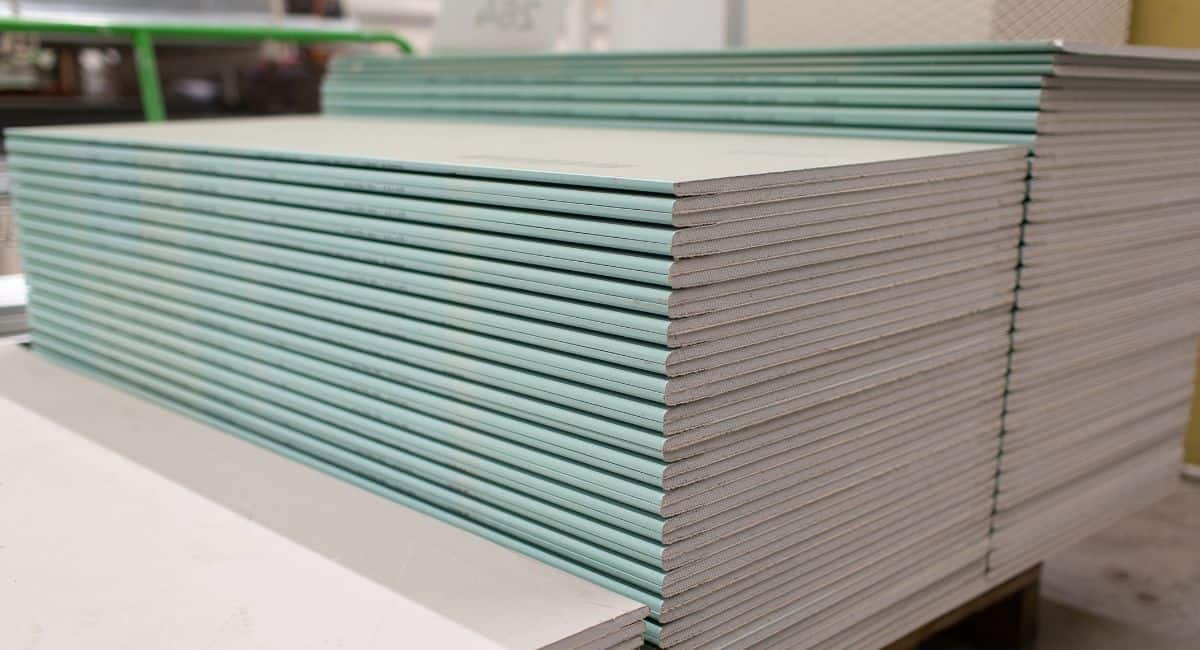Drywall has become an essential material in the construction industry due to its versatility, affordability, and ease of installation. It provides a durable and attractive finish to interior walls and ceilings, while also providing insulation against temperature changes & soundproofing for noise reduction purposes. It can be found in practically every building, from homes to offices to stores.
Because of its immense popularity as a building material, a common question posed in relation to drywall is how long does it last?
That’s what we’ll answer in this article. We will discuss the lifespan of drywall, factors that affect it, and steps you can take to prolong the life of your drywall be it at your home or office. The goal is to help homeowners gain a comprehensive understanding of how long their drywall will last and what measures they can take to extend its life.
The Average Lifespan of Drywall
While drywall is known for its durability, by no means is it indestructible. It is subject to wear and tear over time, just like many other components of your home. The lifespan of drywall depends on various factors such as material quality, installation, environmental conditions, and maintenance.
The average lifespan of drywall has a fairly wide range, it can last anywhere from 30 to 70 years. The difference is quite extreme, however as you’ll see later in this article, factors within most homeowners’ control play a huge role in how long your drywall will last.
In general, drywall that’s been professionally installed and receives the proper maintenance can and will last longer than poorly installed or maintained drywall. Additionally, the type of drywall used can also affect its lifespan.
Another factor that affects the lifespan of drywalls is their location within a building structure. For instance, moisture-prone areas such as bathrooms and kitchens may require more frequent replacement compared to drier areas such as living rooms or hallways. Let’s take a closer look at some of these factors.
Factors that affect the lifespan of drywall
Moisture and humidity
One of the leading factors that affect the lifespan of drywall is moisture and humidity. When excess moisture is present in a space, it can weaken the structure of drywall, rendering it less effective in its role as a barrier between rooms.
Water damage can lead to mold growth and other problems, which can further compromise the integrity of drywall. In areas with high humidity levels, constant exposure to moisture can cause drywall to sag or warp over time.
Temperature changes
Temperature changes are another factor that can impact the lifespan of drywall. Extreme temperatures, whether hot or cold, can cause drywall to expand or contract over time.
This expansion and contraction can lead to cracks or fissures forming on the surface of the wall. It may also cause the joint tape to loosen and come apart at seams leading to dislodged sections.
Material Quality and Quality of Installation
The material quality and installation method used for drywall significantly affects its longevity. Using low-quality materials will result in early wear and tear while improper installation could compromise its structural soundness. Signs of a poorly installed drywall job may include:
- Gaps between panels
- Uneven surfaces and corners
- Visible seams
- Sagging ceilings
These can all have severe negative impacts on the integrity of the drywall installation, and diminish its lifespan.
Maintenance Tips to Extend the Lifespan of Drywall
Fix Small Damages Immediately
Addressing minor damage to your drywall as soon as possible will go a long way in getting more life out of your drywall. Fixing repairable issues like small holes or cracks can prevent them from worsening over time and causing more significant damage that requires expensive repairs.
For small holes or cracks, use joint compound to fill them in before sanding down the area and painting over it with a matching color of paint. For larger holes or sections that have been damaged beyond repair, you may need to replace the affected area altogether.
Be Proactive in Preventing Water Damage
Moisture is probably the single biggest culprit that will quickly deteriorate your drywall. Thankfully, there are steps you can take to attack moisture and water damage before it ever becomes an issue, and extend the life of your drywall.
One of the main steps you can take is to ensure you start by installing the correct drywall in the first place. This is obviously easier said than done for older homes. However, if you are completing renovations, or purchasing a new home. You’ll want to ensure that areas prone to moisture like bathrooms, or laundry rooms, have green board installed rather than regular drywall. Green board is far more resistant to moisture than regular drywall sheets.
A lesser-known tip actually starts outside of your home. Always ensure your roof and gutter system is clean and clear of debris. If your gutters begin to pool water, or you notice ice dams in the winter, this is a sign of inadequate gutter maintenance. This water can then back up, and start to seep into your home. This can cause water damage to your drywall.
Conclusion
The lifespan of drywall is influenced by various factors, including material quality, installation, environmental conditions, and maintenance. With proper care and attention, drywall can last anywhere from 30 to 70 years.
To extend the life of your drywall, it is essential to address small damages immediately, be proactive in preventing water damage, and ensure the correct type of drywall is installed in moisture-prone areas. By understanding these factors and taking appropriate measures, homeowners can enjoy the benefits of durable and long-lasting drywall in their homes or offices for many decades to come!
If you have any questions about drywall and are in need of a professional drywall contractor in Edmonton, feel free to reach out to our team at any time!

